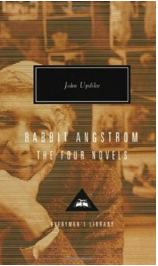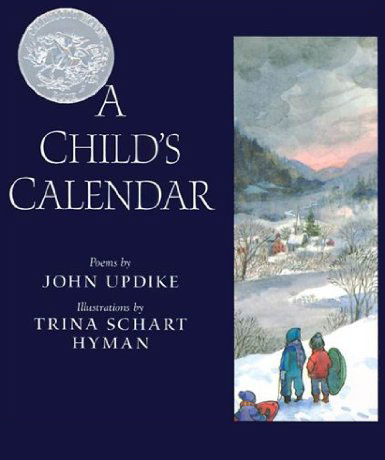 If you open up the July 5/12 2013 Special Double Issue of Entertainment Weekly magazine and go to page 96, you’ll see that Updike’s Rabbit quartet was named the #8 novel of all time.
If you open up the July 5/12 2013 Special Double Issue of Entertainment Weekly magazine and go to page 96, you’ll see that Updike’s Rabbit quartet was named the #8 novel of all time.
“‘Rabbit’ Angstrom runs from marriage and responsibility and runs smack into them again in Updike’s masterful chronicle of a man’s four-decade race against the American zeitgeist,” the editors write.
Only F. Scott Fitzgerald and Willa Cather placed higher among American writers, with The Great Gatsby earning 2nd place and My Antonia 6th.
Toni Morrison’s Beloved came in at Number 9, right behind Updike, followed by E.B. White’s Charlotte’s Web (#10—children’s books, popular books, genre books, and international authors were all considered), William Faulkner’s The Sound and the Fury (#12), Harper Lee’s To Kill a Mockingbird (#13), E.L. Doctorow’s Ragtime (#15), Cormac McCarthy’s The Road (#17), Herman Melville’s Moby-Dick (#18), Vladimir Nabokov’s Lolita (#19), Larry McMurtry’s Lonesome Dove (#20), Theodore Dreiser’s An American Tragedy (#21), Ralph Ellison’s Invisible Man (#26), Richard Wright’s Native Son (#30), J.D. Salinger’s Catcher in the Rye (#32), John Irving’s The World According to Garp (#34), Ayn Rand’s Atlas Shrugged (#36), and Ernest Hemingway’s The Sun Also Rises (#37).
 Morrison was the only American writer to place twice, with Song of Solomon coming in at #52. Alice Walker’s The Color Purple made the list at #45, as did Mark Twain’s The Adventures of Huckleberry Finn (#62), Philip Roth’s Portnoy’s Complaint (#63), David Foster Wallace’s Infinite Jest (#64), Saul Bellow’s Herzog (#65), and Joseph Heller’s Catch-22 (#85). Amy Tan’s The Joy Luck Club barely made the list at 100.
Morrison was the only American writer to place twice, with Song of Solomon coming in at #52. Alice Walker’s The Color Purple made the list at #45, as did Mark Twain’s The Adventures of Huckleberry Finn (#62), Philip Roth’s Portnoy’s Complaint (#63), David Foster Wallace’s Infinite Jest (#64), Saul Bellow’s Herzog (#65), and Joseph Heller’s Catch-22 (#85). Amy Tan’s The Joy Luck Club barely made the list at 100.
The article, which runs from pages 94-103, generated so many reader complaints that the editors felt compelled to defend their selection process (click here). Topping the list? Leo Tolstoy’s Anna Karenina. That Updike is so well thought of by the staff of an entertainment magazine speaks to both the literary merit of the Rabbit novels and their popular appeal.

